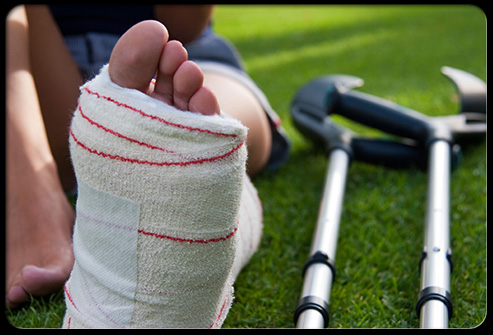I don’t know about you but it really gets under my skin when I see people sharing youtube videos of kids training with the headline “NO DAYS OFF”. This usually accompanies a video of a youth athlete doing some high intensity activity such as sprints, plyometrics or resistance training. This is a ridiculous mentality and it’s propagated by early specialisation, over-enthusiasm, naivety and lack of understanding of the human body. It’s counterproductive for athletes, parents and coaches.
The human body is not capable of having “no days off”. Contrary to popular opinion, the “Pros” do not do it. Physical training is a stress to your body. It’s a stimulus designed to produce the adaptation of improving strength, power, speed or endurance. A basic understanding of the human body will inform you that after a period of stress (physical, mental, immune), your body REQUIRES a period of lower levels of stress in order to recover and improve to increased levels.
This is basic level physiology and is called the “General Adaptation Syndrome” first coined by Han Selye, in relation to disease or illness. It has since been expanded to stress in the physical form of training.

In a properly organised training program, a stimulus (eg. strength, speed, endurance, or power session) is delivered, which leads the body from a baseline state (a) into an initial “Shock” phase (b). After entering the shock phase and providing the athletes is given sufficient recovery (hydration, nutrition, sleep, downtime), then the athlete’s physiological systems can enter the “Compensation” stage (c).
These compensations are the adaptations to training we are trying to produce in sessions. These are the increases in strength/power etc., that we want to see. After the compensation phase, the athlete reaches the “Resistance” phase (d). This means that the athlete’s system requires a greater level of stimuli (eg. intensity/volume/frequency) to stimulate another onset of shock and compensation, as they are now resistant to the previous level of stimuli encountered. This is why we must increase sets, reps, frequency or intensity to continually adapt, because the previous level is no longer adequate. This is a fairly simplistic view of training, but it explains the process adequately enough.

Here in lies the issue. If during the time period between the “shock” (b) and “compensation” (c) phase, you deliver another high intensity stimuli to your athletes you can produce the following negative consequences:
- Your athlete performs poorly as they have failed to recover from the initial stimuli
- You send the athlete straight back into the shock phase again
Now don’t get me wrong, I know that this has it’s place. This is typically called “planned over-reaching”, meaning you as a coach are purposefully putting your athlete into an “over-trained” state to produce greater adaptations further down the line. However, this needs to be a very calculated and measured method. It’s also usually reserved for higher level, mature athletes. You know, the kind that have increased their training volume and frequency over the years to reach a long-term level of performance, rather than ramping it up overnight in a mislead attempt at “making it”.
This is why a “no days off” mentality can be damaging. It can expose your athletes to the following risks:
- Poor quality of sleep due to an overactive nervous system
- Acute injury due to cumulative fatigue negatively influencing movement patterns
- Overuse injuries due to improper recovery periods between stimuli (eg. stress fractures, jumper’s knee, tennis elbow, pitcher’s elbow etc.)
- Increased risk of illness (eg. upper respiratory tract infection URTI)
- Staleness/mental fatigue and demotivation

So what is good practice?
At the professional level, athletes do not train at high intensity every day, because they/their coaches/their sport science team know it poses a risk. Instead, they will intersperse heavy/high intensity/high volume training with periods of lower intensity/volume training. Bodybuilders do this by rotating bodyparts in the workout, powerlifters train a different movement (eg. bench/squat/deadlift) and weightlifters do it by vary elements in the session.
In the sports science world lower demand days are called “recovery” days and are usually characterised by recovery methods such as massage, foam rolling, stretching, low level cardiovascular activity, hydrotherapy or even cryotherapy. Often athletes are even given the day off altogether to spend time with their family/friends and do things outside of sport. In the youth context this is as simple as just doing something else!

So I hope that if you were one of these “NO DAYS OFF” parents or coaches, that perhaps you’ve reconsidered your position. If you still are adamant your child/athlete trains everyday, I hope you now realise you need to factor in some recovery.
But please no more videos about your 10 year old taking no days off… I for one don’t want to see it.
If you would like to read more about how to physically prepare your youth athlete/team appropriately, please have a look at our range of Ebooks. If you are interested in obtaining professional coaching for your athlete/team, please visit our Coaching Services page.
If you found this article helpful, please comment, like or share it. To stay up to date with us, please visit out Facebook page.
Are you a grassroots youth sport coach or PE teacher who wants to improve the athleticism of your athletes?? Check out our Fundamental series athletic development programs here.

